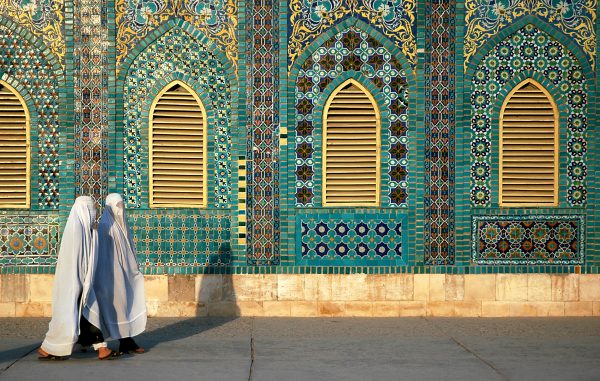By Shanthie Mariet D’Souza
Copyright thediplomat

The dominant narrative on women in Afghanistan, one that appears fairly regularly in international media, is a story of restrictions, denial, and loss of rights. Under the Taliban’s Islamic Emirate, the rights of women are under siege. It is arguably one of the key reasons why the regime’s yearning for broad international recognition is yet to actualize. However, what is often missed are the stories of courage, adaptation, and resilience by Afghan women who, while living within those structural constraints, are trying to make a difference. And to an extent, even the de facto Taliban authorities acknowledge this reality. Any hope that things would change for the better in the future must take note of these windows of opportunities and build on the agency exhibited by women inside Afghanistan who are navigating a complex terrain. One of the institutions that stands out as a beacon of hope is the Afghanistan Women’s Chamber of Commerce and Industry (AWCCI), which was founded in 2017. The AWCCI’s mandate involved promoting and supporting Afghan women entrepreneurs and businesses. It was meant to serve as the unified voice of women entrepreneurs, to connect them with opportunities, and to provide for a more enabling environment in time of shrinking economic and employment opportunities. Even under the Taliban’s government, the AWCCI has continued to operate and expand its operations into 20 Afghan provinces. The result is nothing short of a silent revolution that has significantly increased the number of businesswomen and entrepreneurs. In 2020, for example, about 2,421 Afghan businesswomen had official licenses and membership of the AWCCI. By 2024, that figure had grown nearly four times to 9,162. There are, as of now, 11,625 women-owned businesses registered across the country. The estimated number of women doing business without licenses has grown from 52,000 to 120,000. Limited as they may appear, most of these businesses revolve around handicrafts, agriculture, health, food, industry, and jewelry. I had an opportunity to interact with Salma Yousafzai, the CEO of AWCCI, during my recent visit to Afghanistan. Yousafzai spoke of the expanded mandate and achievements of the AWCCI. In the past two years, the AWCCI has been able to assist more than 12,500 micro, small, and medium enterprises (MSMEs) in accessing alternative trade routes, support more than 900 women-owned businesses in digital commerce and export facilitation, provide financial literacy and business training to more than 5,000 women across Afghanistan, and establish partnerships with more than 10 regional markets to strengthen supply chains. For women who have been restricted from public workspaces, the AWCCI has launched a home-based online business initiative. Taliban officials have termed its work as very necessary and beneficial for women’s business activities. AWCCI isn’t alone in this endeavor and achievements. Under the prevailing circumstances, health- and education-related NGOs are making their presence felt. Yousafzai also runs an NGO on education and health, the Harir Afghan Support, Health and Education Organization (HASHE), in Kabul. Farah Mogahid, who runs another education NGO, works with the Ministry of Education as a woman mediator trying to bridge the gap between traditional and modern education in madrassahs for girl children from Grade 7 to 12. She is presently working on curricula for professional and specialized education as well. These achievements demonstrate the extraordinary resilience of Afghan women, and the transformative potential of inclusive social and economic strategies. Challenges abound. The latest in the Taliban spree of proscriptions targeting women was the ban on more than 600 books written by women authors from academic curricula and libraries of educational institutions. Prior to that, on September 15, the Taliban’s Supreme Leader Hibatullah Akhundzada issued a ban on fiber-optic networks and WiFi services in Afghanistan to “ prevent immorality,” specifically in Balkh, Kandahar, Uruzgan, Zabul, and Nimruz provinces. But the achievements of Afghan women demonstrate their ability to work around such constraints and gradually (re)claim space. They find and forge ways and means to earn their livelihood in sync with the prevailing cultural and social norms. I heard while in Afghanistan that women are able to do businesses and sell products in markets in Kabul and Kandahar, along with male shopkeepers. Rangina Hamidi, a former minister of education and founder of Kandahar Treasure (KT), transforms Afghan women’s lives through ethical employment, elevating artisans and their families out of poverty. Safe Path Prosperity, founded by Zala Ahmad, has employed women in Kabul and Kandahar to make reusable sanitary pads. By using a holistic approach, this social enterprise of using salamati circles is an ingenious method of providing training, employment and taking care of the wellbeing of women. These are a few of the many such small organizations in the country that are providing avenues for employment, education, and health for women, which hardly find mention in the international media. The approach of the international community toward Afghanistan today is largely couched in terms of human and women rights. But this approach has yielded few, if any, results. As the international community keeps pushing a gender and human rights agenda, the leadership in Kandahar is hardening its position. This does not mean that the international community should turn away from the issue of women and human rights, but there is a need to understand and reframe these issues within the existing cultural ethos and religious idiom, which rejects everything Western and foreign. While the constraining environment is a reality, so are the episodes of resilience and innovation demonstrated by women in Afghanistan. These need to be and can be preserved and promoted by engaging with Afghans inside the country. Small interventions can make a difference on the ground. For instance, there is a need for: Women’s Trade Facilitation Desks at border crossings, to reduce barriers for women traders; support for regional exhibitions and trade fairs that feature Afghan women-led businesses; as well as innovative funding and digital literacy programs. Establishing a Regional Forum of Women Entrepreneurs and joint initiatives in climate-smart agriculture, renewable energy, and sustainable handicrafts are other possible areas for consideration. Within the structural constraints of Taliban-ruled Afghanistan, there is a need to find these windows of opportunity and provide agency for the women and people in in charting the future trajectory of their country. Ultimately, change may come from within by dismantling the barriers that seem impregnable today, from the outside.



